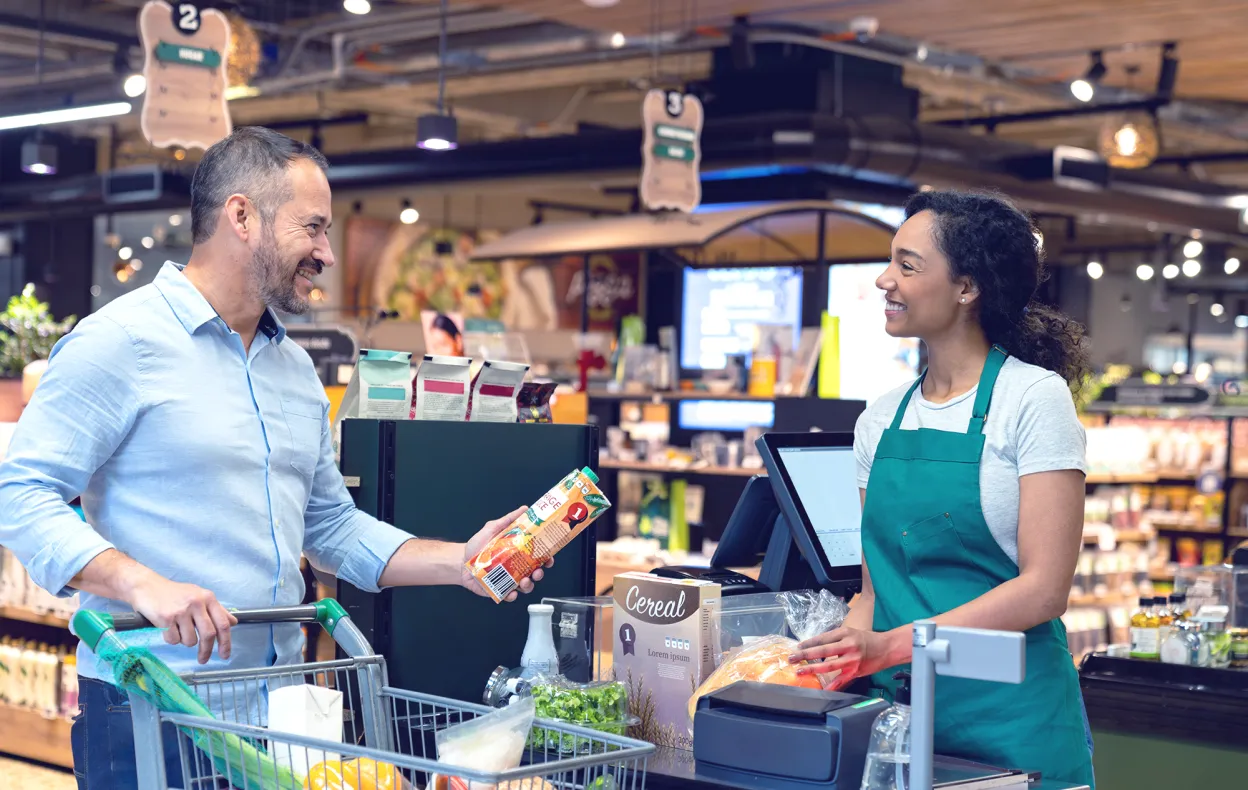How Payments Technology Enhances Experiences in the Checkout Lane
Listen to this article

Upgrading payment technology is essential for meeting today's consumer expectations. By implementing fast, flexible solutions, retailers can create experiences that drive customer satisfaction and loyalty. Read our latest blog for three ways advanced payment technology, particularly Android-based solutions, can get customers through checkout faster, give them more control over their shopping experiences, and personalize interactions.
No matter which technology is grabbing headlines, retailers will always put a premium on giving their customers a memorably good experience. That’s because consumers expect a lot from the companies that get their business. According to Salesforce's research, 80% of consumers prioritize experience just as much as the products or services they're purchasing. And when new technology emerges, consumers expect these advancements to bring speedier service (81%) and interactions tailored to their unique needs (73%). As expectations for personalized, fast, and consistent payment experiences rise, it's crucial for brick-and-mortar stores to adapt their checkout lanes accordingly.
The answer lies in upgrading payment technology in the checkout lane. By enhancing the checkout process, stores can leave a lasting impression on customers while streamlining operations. Here's how payment technology can transform the checkout lane experience.
How to Enhance Checkout Lane Experiences
Since the checkout is the last chance retailers have to make a positive impression during an in-store shopping experience, it’s important to make it as good as possible. To optimize checkout experiences:
- Decrease wait times
One of the primary frustrations for customers is waiting in line – it’s the last thing anyone wants to do after they’ve already invested time gathering items from around the store. Fast payment technology ensures transactions are swift and hassle-free. Whether customers prefer cash, credit, debit, contactless, or any range of modern payment types, like buy now, pay later (BNPL), the checkout lane should provide a seamless experience for all. By eliminating friction at the moment that matters, retailers can reduce the $555 billion in losses from shoppers abandoning checkout lines.
Another strategy is to use mobile POS solutions to enable staff to process transactions from anywhere in the store, reducing wait times and increasing efficiency with queue-busting strategies. SoftPOS technology can take this a step further. It allows retailers to accept contactless payments directly on mobile devices, eliminating the need for additional costly hardware but still allowing them to accept payments wherever they’re assisting customers.
- Offer self-service
Offering self-checkout options caters to busy shoppers who prioritize speed and autonomy. However, it's essential to assist those who need it, especially for specialized products or age-restricted items. Self-checkout technology, powered by AI, is revolutionizing the retail experience by incorporating image recognition, barcode matching, and data analytics. These advancements make the checkout lane smoother and more efficient for customers while also helping merchants reduce shrink and losses. By accurately identifying products and analyzing purchasing patterns, AI-driven self-checkouts streamline operations and enhance overall store security.
Self-service payment experiences should be easy and intuitive. Self-checkout stations should include payment technology that’s easy for any consumer to use with no training.
- Personalize payment experiences
Shoppers will also respond positively to personalized experiences, including payments. From recognizing loyal customers to offering tailored rewards and preferences, personalization enhances shopper satisfaction and customer loyalty. Smart checkout lane technology enhances the experience by recognizing returning customers. By providing seamless access to saved data, shoppers no longer need to re-enter their email or phone numbers for loyalty programs. This technology also offers easy access to loyalty rewards, allowing customers to decide whether to use or save them. Additionally, it provides options for email or paper receipts and can request customer feedback through a brief survey directly from the payment terminal, offering both convenience and engagement.
Android-based payment terminals empower merchants to customize their checkout lane experience with business applications and additional features. This flexibility allows for unique and innovative solutions tailored to specific customer needs.
Remember Your Staff’s Role to Enhance Checkout Experiences
While technology plays a crucial role in enhancing checkout lane experiences, highly trained staff are equally important. Friendly, knowledgeable employees can provide the human touch that many customers appreciate and reward with their continued loyalty. By investing in employee training on payment technology, retailers can build a reputation based on seamless assistance and support for customers.
Upgrading payment technology is essential for meeting the evolving expectations of today's consumers. By implementing fast, flexible, and personalized solutions, retailers can create memorable checkout lane experiences that drive customer satisfaction and loyalty. To learn more about building a comprehensive strategy that combines technology and in-person service, contact us today.










